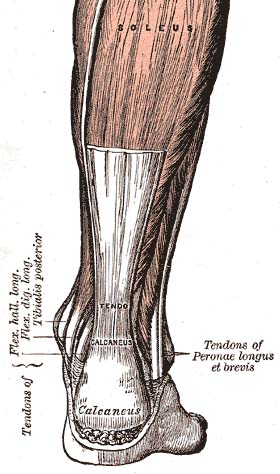 Historically, the term ‘Achilles Heel’ referred to the greatest weakness of an individual: Achilles was a figure of Greek Mythology, a hero of the Trojan War killed by a small injury to his heel. Today, following this tale, the Achilles is the small tendon connecting the calf muscle to the heel bone. The tendon is still a weakness for many dancers, most notable recently was the snapping of the tendon of a Bolshoi dancer during a performance. This was a result of tendonosis, a chronic and more serious condition where bouts of tendonitis are not treated properly or the dancer does not take adequate time to rest.
Historically, the term ‘Achilles Heel’ referred to the greatest weakness of an individual: Achilles was a figure of Greek Mythology, a hero of the Trojan War killed by a small injury to his heel. Today, following this tale, the Achilles is the small tendon connecting the calf muscle to the heel bone. The tendon is still a weakness for many dancers, most notable recently was the snapping of the tendon of a Bolshoi dancer during a performance. This was a result of tendonosis, a chronic and more serious condition where bouts of tendonitis are not treated properly or the dancer does not take adequate time to rest.
The job of the elastic structures of tendons at the end of each muscle is to connect muscles to bones. However, dancing places stress on the Achilles tendon and Achilles tendonitis occurs when the tendon becomes inflamed due to overuse, excessive pronation, bowlegs, tight or short Achilles tendons, or abnormally shaped heel bones. Without correct technique, dancers increase their likelihood of developing Achilles tendonitis, making it imperative that dancers maintain their technique and do not develop bad habits. Forcing turnout, failing to press the heels into the ground in landing from jumps and failing to rise to a full three quarter pointe also puts dancers at further risk.
Achilles tendonitis can be prevented by ensuring you are not forcing the feet further outwards in turnout and landing properly from jumps. Make sure shoes and ribbons are not too tight across the tendon and try to avoid using hard, unsprung floors, raked stages, or dancing in cold temperatures. If Achilles tendonitis does occur, it can be resolved through proper treatment including rest, ice, strapping the tendon up and anti-inflammatory tablets, and taking additional steps to ensure it does not return. By making sure you are warmed up, tendons are less likely to become inflammed and injured under repeated stress.
